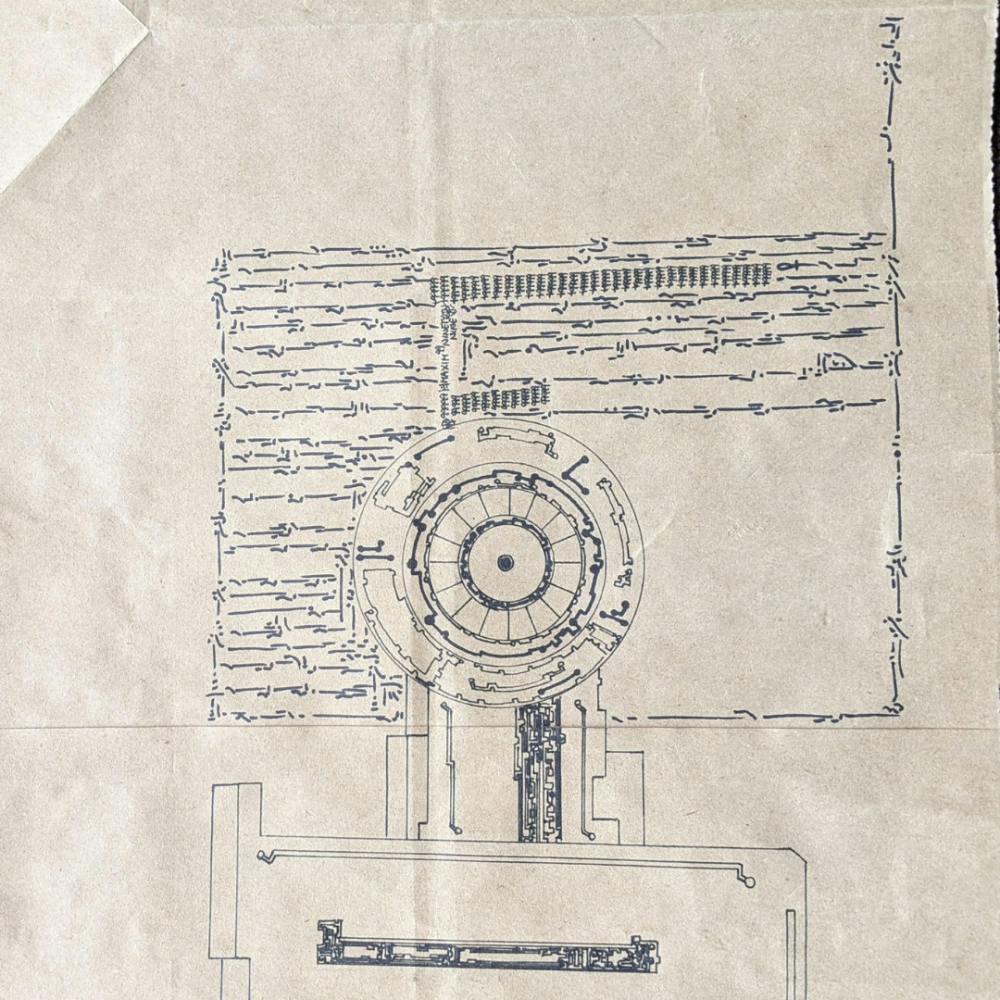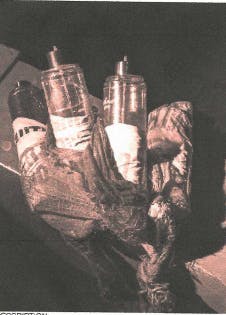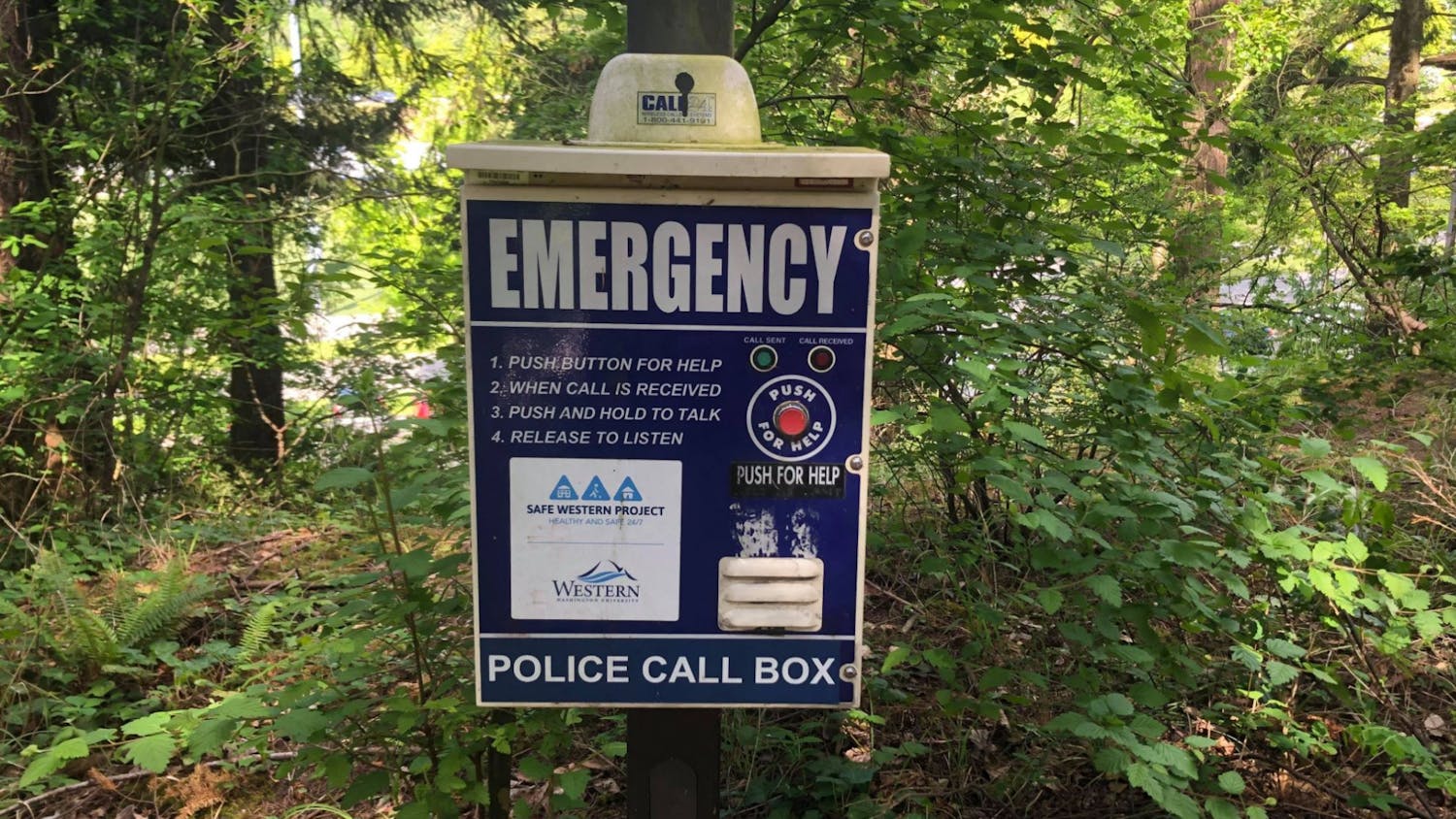
Editor’s note and content warning: This story includes discussion and opt-in access to images that include swastikas. The Western Front uses “antisemitic” instead of “anti-Semitic” in accordance with the findings of Western’s Task Force on Preventing and Responding to Antisemitism. The task force was made up of students, faculty, staff and administrators, and the report can be found here.
Around 8:30 Friday morning, a man in a dark hoodie and a medical mask walked through the doors of the Viking Union and dropped off a handwritten, roughly 40-page manuscript filled with strings of numbers, symbols, drawings, references to science fiction and multiple swastikas.
It was not the first time that’s happened.
Mark Behee, a building manager and greeter at Viking Union, was working at the front desk on April 2. He didn’t register what was going on at first, but when the man abruptly turned around in the main entrance, Behee knew something was amiss. He walked to the doorway and saw that the man had left two stacks of brown papers lying by the entrance. Behee instantly recognized the manuscripts and ran outside, but the man was gone.
“He popped in and out real quick and then just disappeared,” Behee said.
Behee recognized the manuscripts because the same thing had happened to his coworkers on Jan. 22. Both times they weren’t able to get a good look at the man, but because of the bizarre nature of the documents, he and his coworkers believe it’s the same person.
The manuscripts are each around 40 pages in length and entirely handwritten on what looks like grocery bags. They contain a few English phrases, but Behee said it mostly seems like gibberish or some kind of code. The number 99,999 is repeated over and over again. There are also elaborate illustrations. Behee, a self-proclaimed Trekkie, said he also recognized a number of references to Star Trek and other science fiction shows.
But the most concerning part is the swastikas. Behee said the manuscript that was left in January had multiple large swastikas in it. The March manuscript also had several, including what looked like an altar with one drawn at the top. Besides the swastikas, there doesn’t appear to be any language expressing antisemitism, Behee said.

University police were called to Viking Union both times manuscripts were discovered. Behee said police seemed equally baffled. Despite what appear to be swastikas, Behee said, university police told him they couldn’t classify it as a hate crime because there was no language expressing overt antisemitism. At most, the police told him they could classify it as litter or abandoned property, Behee said.
Paul Cocke, Western’s director of communications, said that while the manuscripts did contain symbols that include what looks like a swastika, the weird context of the writings makes it difficult to deduce any meaning.
Whenever possible, The Front will avoid publishing pictures of hate symbols. However, in the specific context of this incident, we believe the physical design of the symbols and the way they were incorporated into the text is relevant to the context of the story. A picture of the swastikas drawn on the manuscript can be found here.
“While certainly bizarre and unusual, University Police have reviewed and found no evidence of a threat to campus,” Cocke said in an email.
Cocke said that the university’s Bias Response Team has been alerted. A Western Alert was not sent because police did not believe there was an imminent threat to campus.
The University Police Department did not respond to an email and voicemail left on Friday afternoon. Cocke said that police are investigating the incident and checking with other area law enforcement. After this article was published, Cocke reached out to The Front to clarify that he acts as the public information officer for all UPD media inquiries.
During winter quarter of 2016, Western experienced a string of antisemitic events. Swastikas were drawn on multiple doors in the Fairhaven complex, and a note with antisemitic threats was found attached to a headless doll in Ridgeway Beta. The student who left the doll told the Equal Opportunity Office that he considered it a prank. The student was required to take one and a half hours of an ethics workshop and placed on disciplinary prohibition.
In response to the incidents, President Sabah Randhawa convened a task force to create recommendations for preventing and responding to antisemitism on campus. The findings were published in March 2017. In winter 2018, seven books in the Jewish Studies section of the library were vandalized.
Behee said he and his coworkers are bewildered. It almost seems like a prank, but Behee said the amount of time and effort the manuscripts must have taken just doesn’t make sense. And even if it is a prank, it’s not a funny one, he said.
“Honestly we’re not really sure what to think about it. We’re all pretty confused,” Behee said.
The manuscripts aren’t the only strange items that have been left near the Viking Union. On March 27, records show that police were called to the Performing Arts Center plaza after someone reported what they thought might be an improvised explosive device.

On March 27, police were called to what turned out to be a fake bomb next to "For Handel," the red sculpture outside the Performing Arts Center. // Photo from UPD police report
The package was located next to the leg of “For Handel,” the red sculpture directly outside the PAC. Upon inspection, police determined that the device was constructed using fragrance bottles bound together with a scarf and yellow caution tape. In the police report, the officer at the scene wrote that the items appeared to be purposely packaged and positioned to look like a threat. Cocke said there is no connection that can be determined between the bottles and the manuscripts, but that students should notify University Police anytime odd or unusual items are found.
Students, faculty and staff who are affected by bias-related incidents can access a 24-hour crisis line through Victim Support Services. The Anti-Defamation League also offers support and resources related to antisemitism.
This article was updated on April 6 to clarify Paul Cocke's role. He is now director of university communications, not director of university communications and marketing. The article was also updated to reflect his role as public information officer for UPD.

Nate Sanford is the editor-in-chief of The Western Front and a fourth-year news/editorial journalism major. His reporting focuses on the environment, local politics, urban policy and anything else that matters. His writing has appeared in Crosscut, the Inlander, Whatcom Watch and at least one desk in Haggard Hall. You can find him on Twitter @sanford_nate and at natesanford.westernfront@gmail.com.





